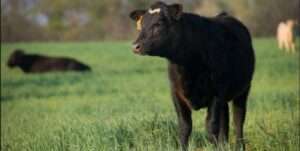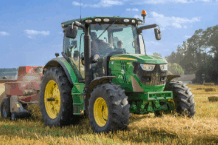High feed grain prices have been an area of concern for livestock producers this year, leading many to look for more cost-effective alternatives to meet the nutritional needs of their cattle during fall and winter months.
There has been a steady increase in cost of gain in cattle going back to the summer of 2020. To combat this and assure the continued well-being of his livestock, Kent Miller of Ellis County is planning on making full use of his native range and dual-purpose, graze-and-grain wheat pastures. Miller, who is the second of three generations working the family farm and ranch enterprise, said it’s key to pay attention to the details given as how most people’s profit-loss margins are too tight to risk their operations.
Rodney Cook of Noble County agreed. The cattle producer plans to make full use of available native range pastures. In addition, he intends to turn out his cattle on a cover crop of oats, turnips and other healthy forages for about four hours a day—an approach he has used for years with great success.
Testing hay and pastures is vital to knowing for certain how the supplemental requirements of the cattle need to be met. OSU Extension has online resources to help producers take accurate samples, get them tested and use the analysis provided to create a feeding program that meets the nutritional needs of their specific herds.
Some producers have asked OSU Extension county offices about using alfalfa as a cost-effective replacement for protein, according to agricultural educator reports.
“Producers need to be diligent with feeding accuracy when using alfalfa as a supplement,” said Dana Zook, OSU Extension area livestock specialist. “However, some sources of alfalfa could provide the protein needed, and potentially also provide added calcium and vitamin A that conventional cubed supplements lack. Speak with your local Extension agricultural educator who can answer questions in detail.”
Zook said producers need to be sure to compare costs of the ingredients by the nutrient needed when looking at supplemental replacements. For example, compare the cost per pound of protein in winter feeding situations when cows are on dry grass.
“Again, don’t skip on testing hay for protein and energy,” she said. “It can help the producer be more accurate when supplementing and thereby reduce costs. Every OSU Extension county office can send off a test for a minimal cost.”




